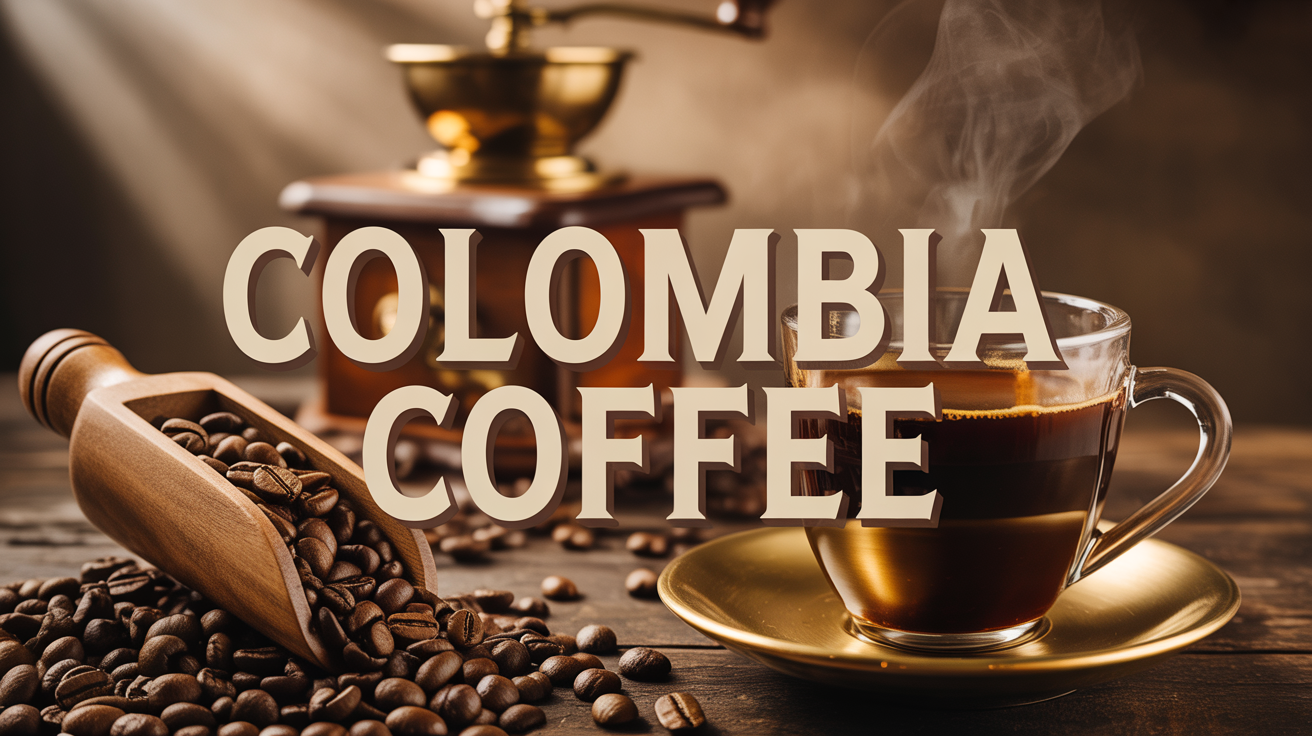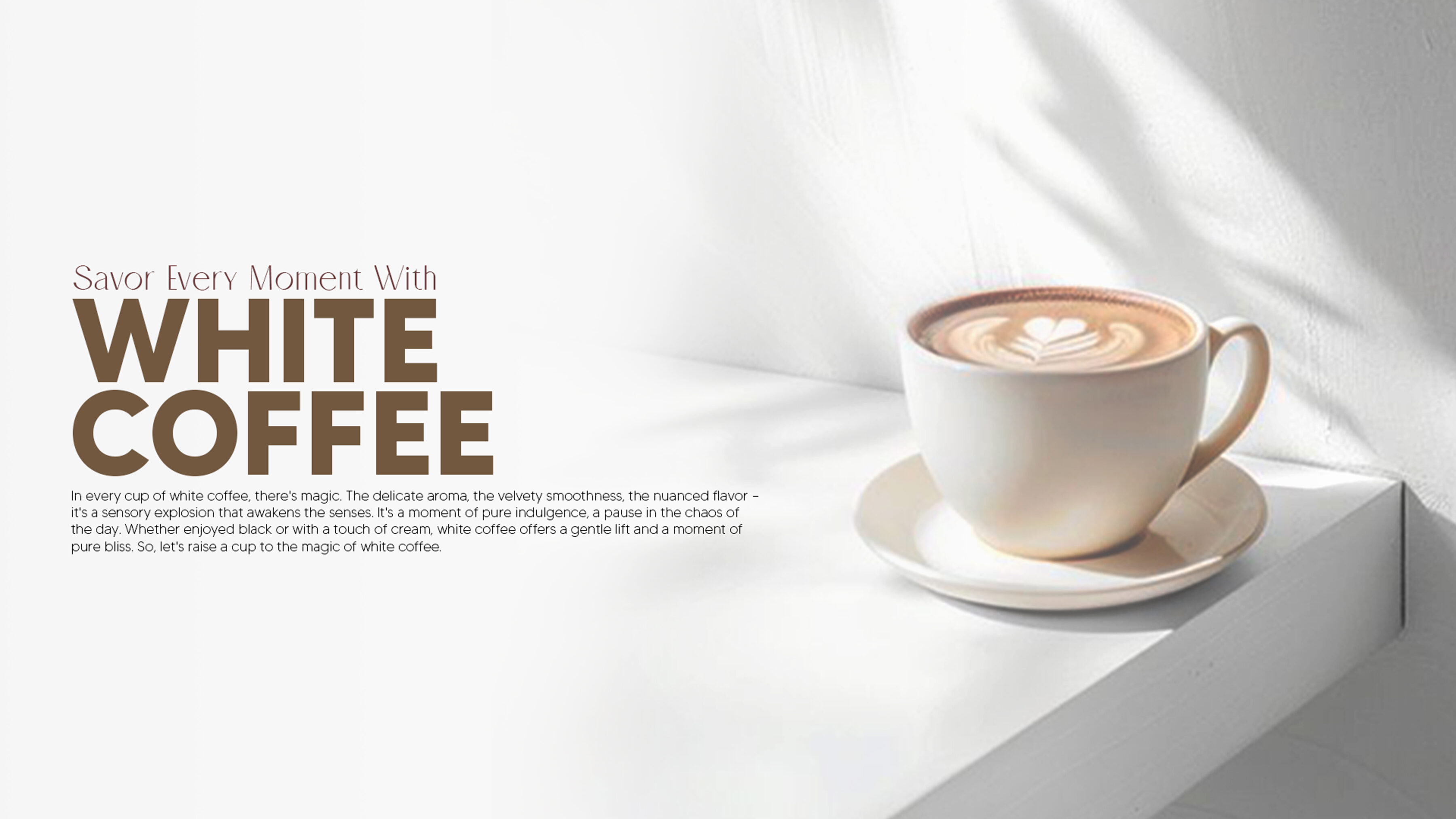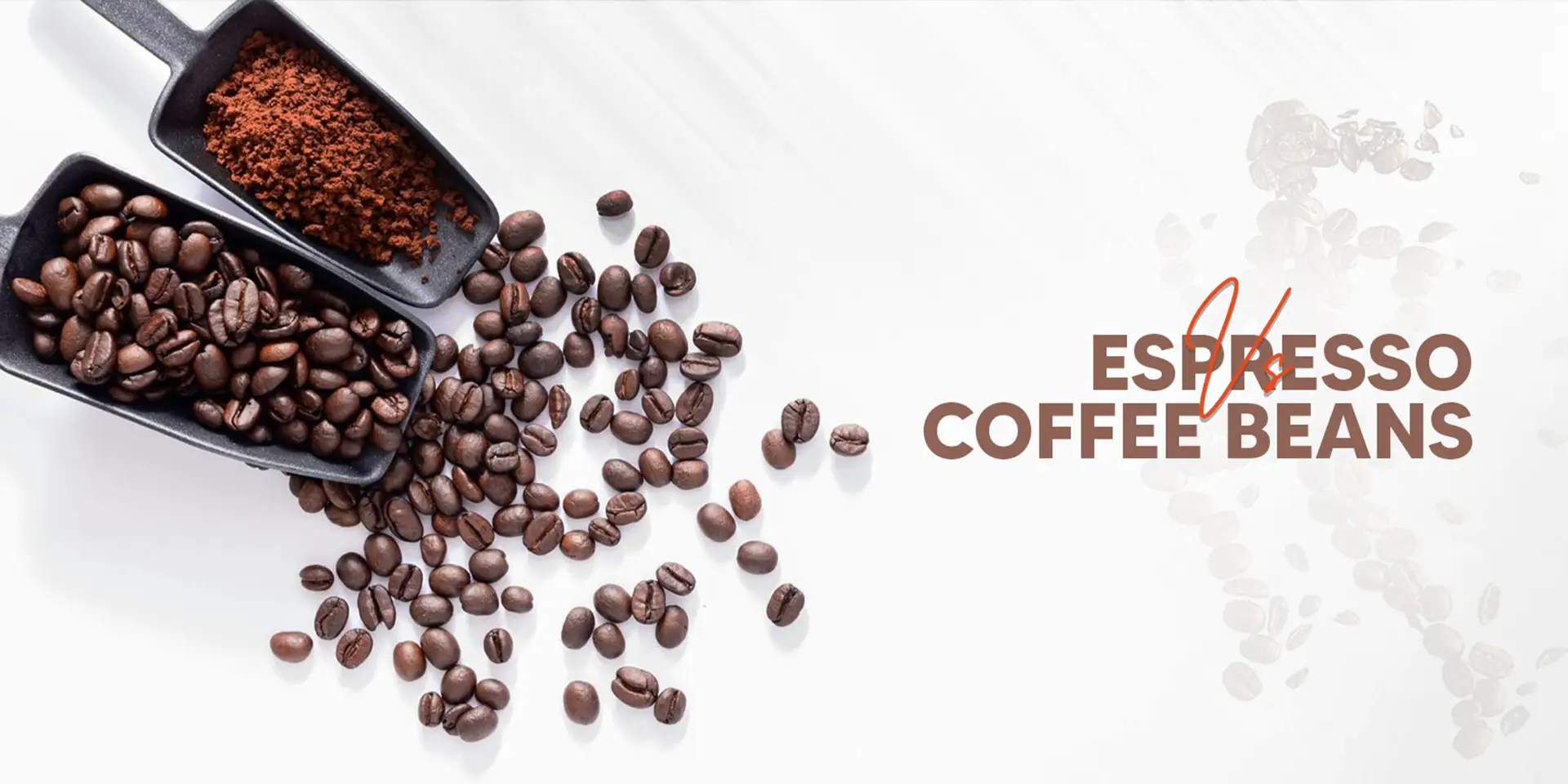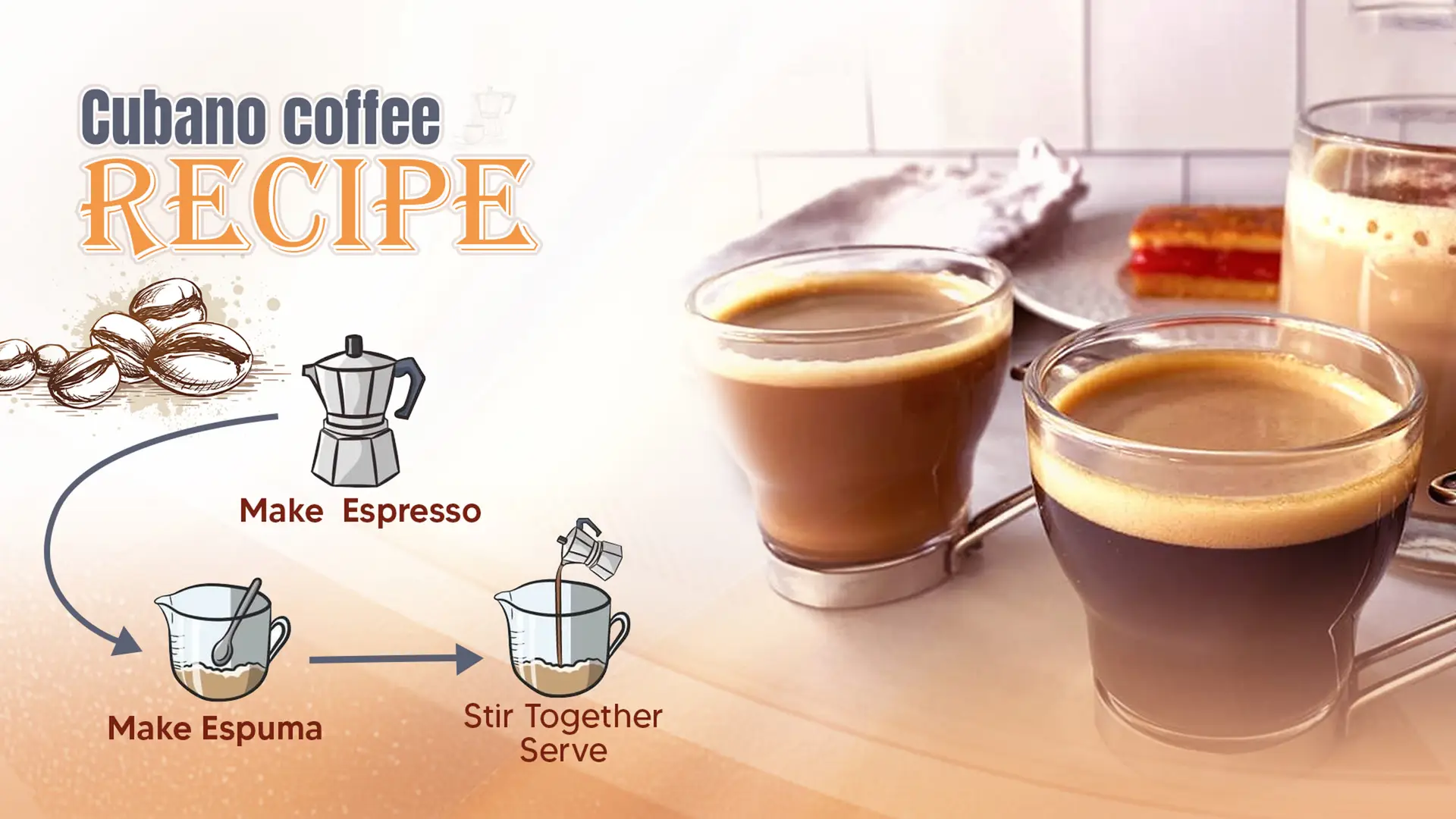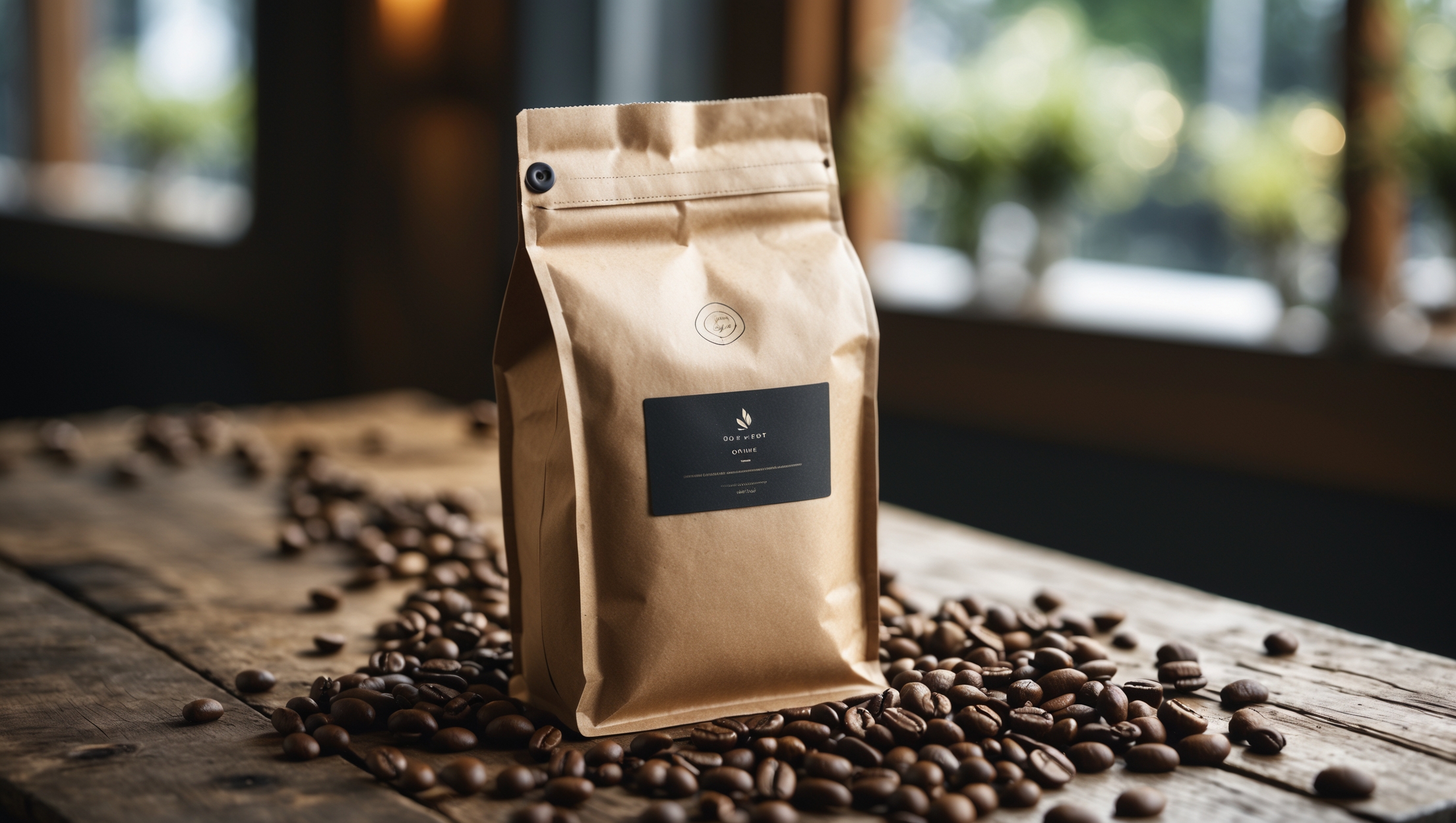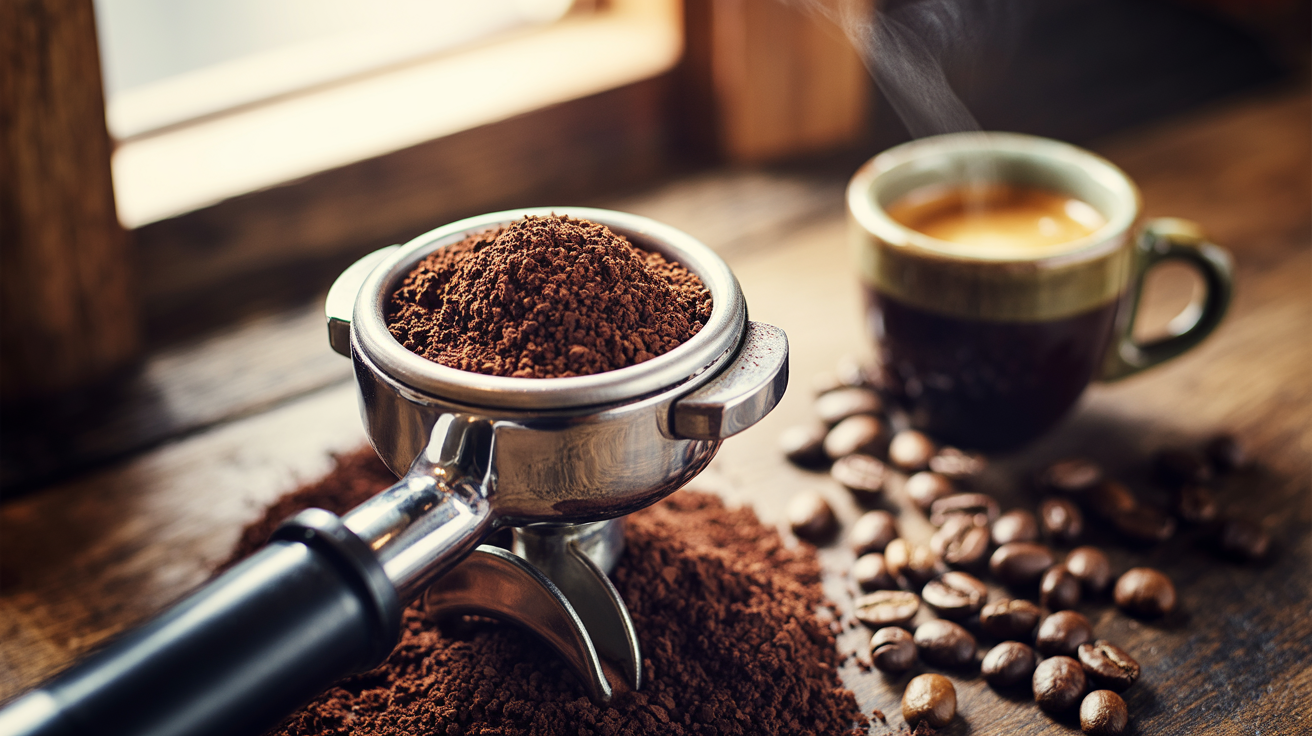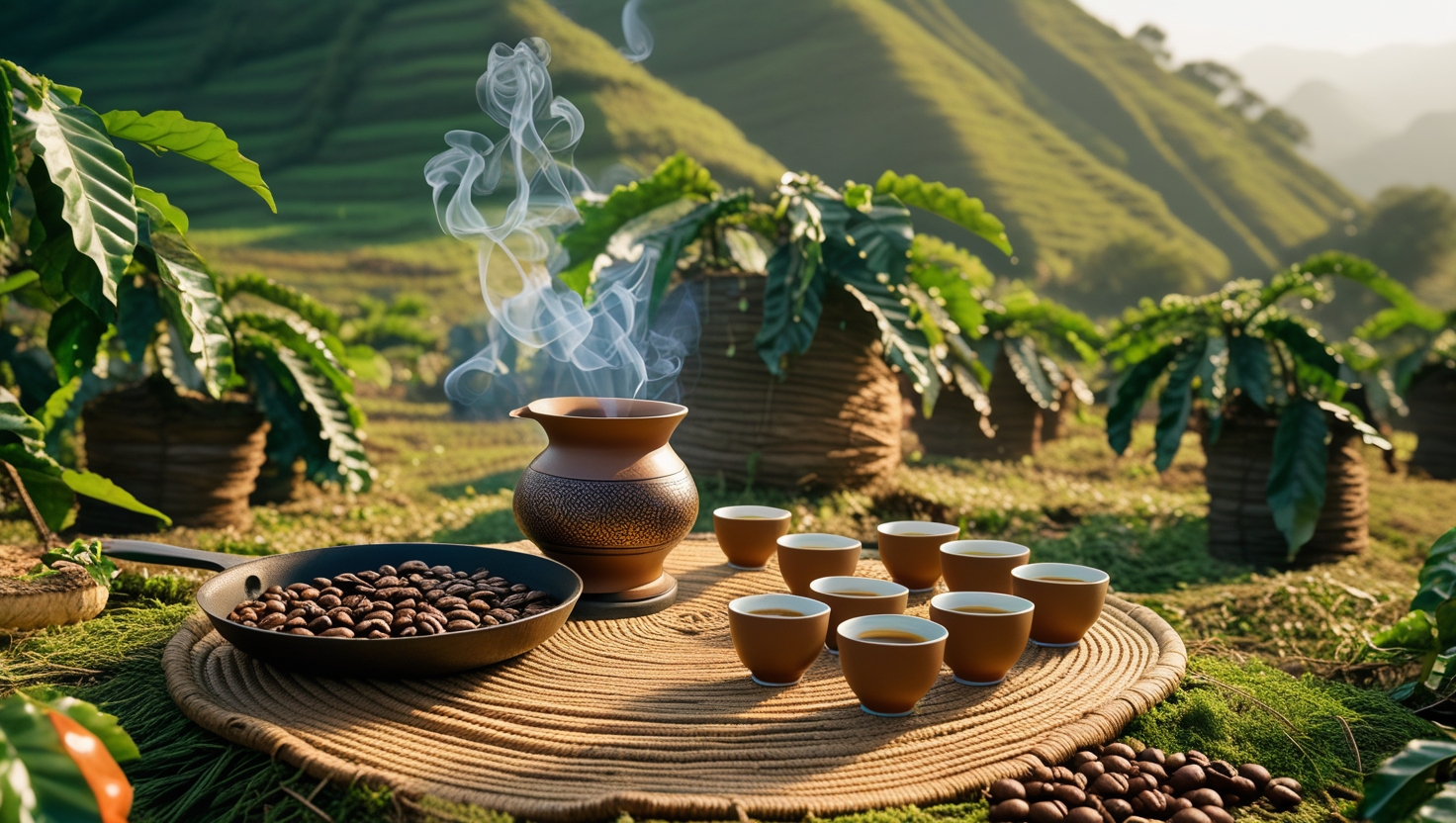Light vs Dark Roast Coffee: What Every Coffee Lover Should Know Light vs Dark Roast Coffee: What Every Coffee Lover...
Read MoreLight vs Dark Roast Coffee: Which One Is Right for You?
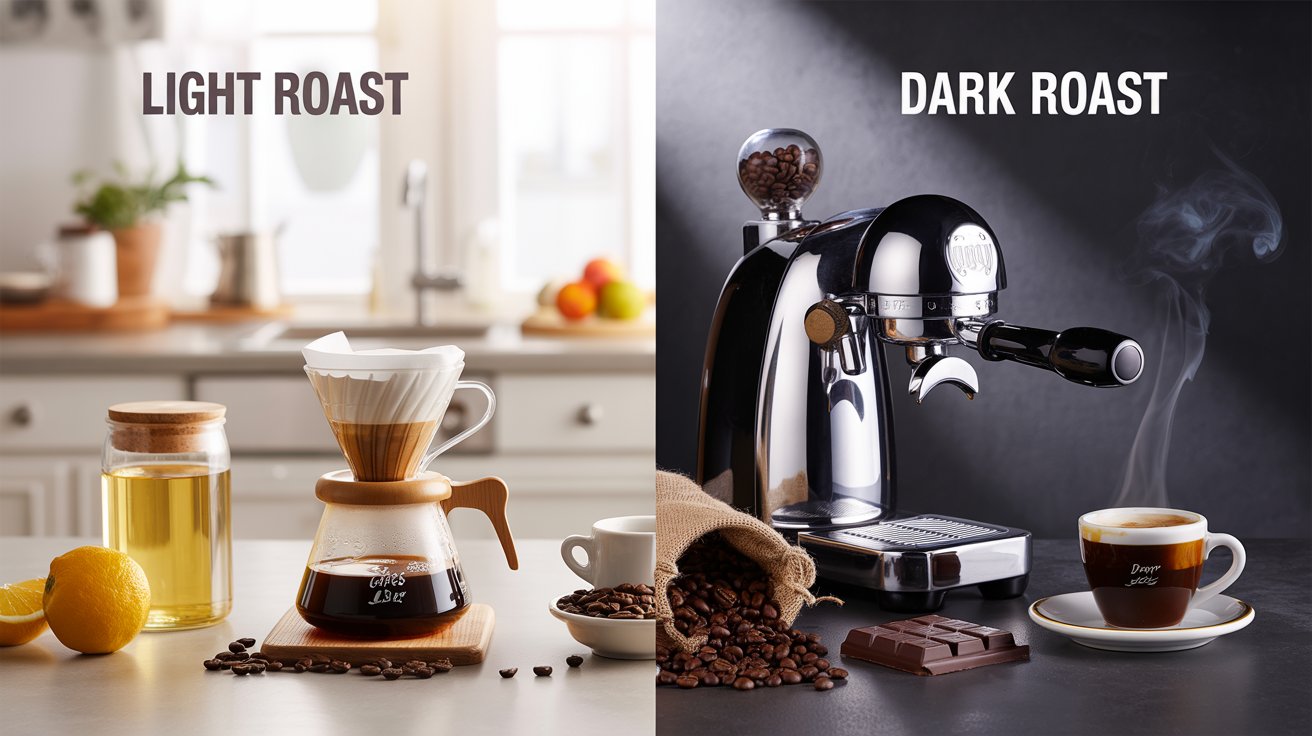
Light vs Dark Roast Coffee: What Every Coffee Lover Should Know

Light vs Dark Roast Coffee: What Every Coffee Lover Should Know


Light vs Dark Roast Coffee Caffeine: What's Stronger?
Myth-busting caffeine content differences using light vs dark roast coffee caffeine
Light roast coffee vs dark roast coffee: Which has more caffeine? Prepare to be surprised by the answer. Contrary to a long-held myth, it’s not the light roasts that are significantly more caffeinated. So a scoop of light roast beans may well yield a greater caffeine content than a scoop of dark roast, but not because there’s more caffeine in it, but because light roast beans are denser than dark roast beans. Light roast beans are denser because light roasting retains moisture during the process, according to the National Coffee Association (NCA). However, investigations such as one in the Journal of Food Science suggest that the difference in caffeine, when adjusted for weight, is small. The roasting level, not the type, of beans mostly affects the amount of caffeine. So pick your favorite roast according to taste, not whether it has more caffeine. You may be surprised at the nuance in flavors presented by each roast level.
What Is Light Roast Coffee? (Taste, Aroma, and Bean Basics)
Define coffee light roast using expert sources.
Light roast coffee is coffee beans that are roasted for a short period, and generally profile the bean’s place of origin and the fact that they are more acidic. While light roasts keep the natural flavors of the beans, making for a brighter and more complex cup, according to the National Coffee Association (NCA). So, what really is light roast coffee? Light brown in color, with a mild flavor profile, it has a floral or fruity aroma and a fuller bean than dark roasts, according to the Specialty Coffee Association (SCA). Anticipate a bright and tangy flavor profile, often described as citrusy and/or sweet. This light roasting retains caffeine, and light roasts are popular for a pick-me-up beginning. Experience the subtleties of light roast coffee and find the cup that’s just right for you.
Explain the light roast coffee bean’s appearance and characteristics.
Roasting beans to this level produces coffee whose color is nearly the same as the original green beans, with very little light roast flavor evident. According to the Specialty Coffee Association (SCA), these beans have a dry surface, without the oils that darker roasts have. They still weigh more than darker roasts, because the roasting is so much shorter and there’s less moisture loss. This held size and density, according to coffee expert Scott Rao, creates the vibrant acidity and compositional complexity present in light roast. The dark outer coat and the oil slick and fissures typically indicative of a darker roast are notably absent. This dry coffee allows the beans to exhibit all the nuanced floral and citrusy tones the light roast emphasizes. The look of the bean affects the final cup as well; it has a complex flavor unlike any other roast level.
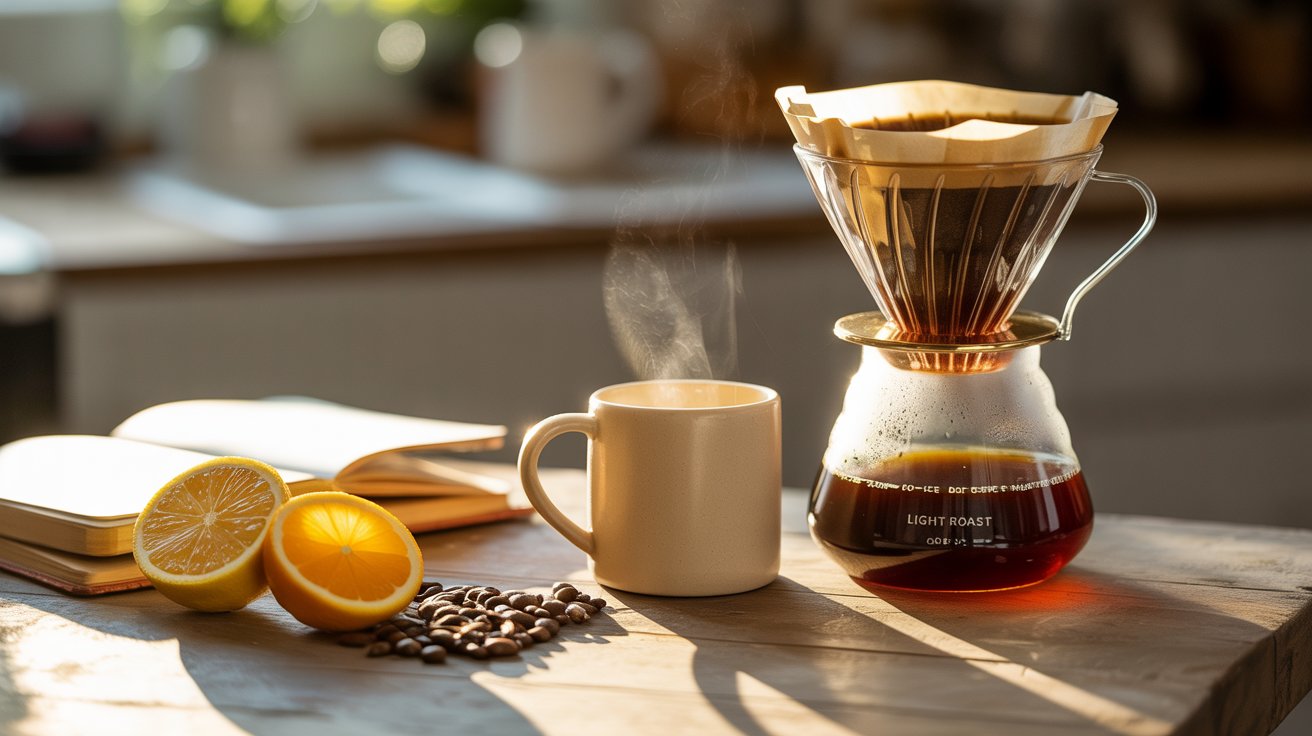
What Is Dark Roast Coffee? (Flavor, Roast Level, and Texture)
Characteristics of dark roasts: bold, smoky, lower acidity
Dark roast coffee has a full, bold flavor profile that can only be celebrated. What is dark roast coffee? It’s a product of long roasting that yields beans with a deep, dark color and an oily surface, the Specialty Coffee Association (SCA) reports. This helps to decrease acidity, giving the coffee a smoother, less zesty flavour than light roasts. “Look for notes of chocolate, nuts, or even burnt caramel,” according to coffee expert Scott Rao. The consistency is usually a bit thinner as the cellular structure is disrupted during roasting. Dark roasts have a strong, bittersweet flavor, which means you might like them if you’re not a fan of acidic coffee and you crave something strong. Dive deep into dark roasted treasures and find your new fave brew.
Common uses (espresso, traditional brews)
As a fast wake-up boost or an elegant dessert, coffee can do it all in innumerable cultures. Espresso, a very strong brew, is probably the most popular form, though the crema is sometimes mistaken for foam. “Uses for espresso” include traditional Italian cappuccinos and lattes as well as contemporary compositions. Classic coffee makers, such as drip and French press, provide an easier, yet just as enjoyable experience, as noted by the National Coffee Association (NCA). These methods bring out the nuances of the coffee’s flavor and offer a comforting ritual for those who practise them. Coffee is a global language – a part of people’s daily ritual, whether they need a pick-me-up, catch up with friends, or take a moment for themselves. Whether it is a black coffee poured simply into a cup or a complex espresso-based drink, coffee is certainly well-travelled.
Light vs Dark Roast Coffee Experience
Share a perfect experience or a blind taste test.
I remember this blurb recently, “light vs dark roast coffee experience,” which came to light at a blind tasting and completely rewrote my coffee experience. We tasted a variety of roasts, all identities concealed, and simply followed our sensory responses. Light roasts were a revelation; they were complex and actually bright, not just bright for a coffee. The flavors of these coffees varied from bright citrus to light florals, as coffee expert Scott Rao described them. The dark roasts brought their famous smoky boldness, but ironically were burying some original character below thicker roast notes. The textural contrasts were dramatic: light roasts had a fatter body and dark roasts a leaner one. Ironically, various self-anointed dark roast lovers boasted of their love of lighter flavors. It reinforced the importance of open-mindedness and the broad spectrum of the sensory world in coffee. This cupping changed the way we thought about roasting.
Discuss regional preferences based on user reviews or data.
Regional coffee trends are an important consideration for localized marketing and product development. “Regional preferences for coffee” provides interesting insights. There are clear trends, as inferred from the data provided by sources such as the National Coffee Association (NCA). For instance, in the Pacific Northwest, there’s a preference for a light roast that reflects unique flavor notes. The Northeast, meanwhile, tends to favor darker, stronger cups. User ratings on sites such as Yelp and Google My Business can provide an even finer-grained look at these geographic variations. The personality of the South is one that favors flavored, sweet coffees. By studying these data, companies can customize their packages and promote and market campaigns. Local knowledge is the key to unlocking potential and finding success in the crowded coffee market. Dive into local data and find hidden potential.
Which Roast Is Healthier? (From a Dietitian's Perspective)
Antioxidant levels in different roast types
The antioxidant concentrations in coffee roasts are dependent on the roasting level. The “healthful effects of coffee” may be related interestingly to its protective antioxidants. “Coffee roasts: Antioxidants are present in all roasted coffee, but several studies indicate light and medium roasts may offer slightly more antioxidants. A report in the Journal of Medicinal Food found greater amounts of chlorogenic acid, a potent antioxidant, in lighter roasts. However, darker roasts also hold other compounds that are good for us, such as melanoidins, which are created during the roasting. Generally, the health benefits of coffee are wide-ranging, roasting notwithstanding, dietitians point out, citing the Academy of Nutrition and Dietetics. Learning extension: Moderate coffee intake can lead to a lower risk of some diseases. At the end of the day, the “healthiest” roast will be whatever one fits your own preferences and goals. Indulge in your favorite form of roasting while feeling good about the health benefits of coffee.
Stomach sensitivity or acidity considerations
“Coffee acidity and sensitive stomach” are important factors for many coffee enthusiasts. When you research “light vs dark roast coffee acidity,” one distinction becomes clear. Some people with sensitive stomachs find that the higher acidity level in light roasts can lead to discomfort. Dark roasts, roasted longer, are also less acidic and easier to digest. This distinction, according to gastroenterologist Dr. Kenneth Brown, is important for those susceptible to heartburn or acid reflux. Interestingly, cold-brew (at any roast level) typically has lower overall acidity than hot-brewed coffee, an additional alternative for sensitivities. In the end, it comes down to what you can tolerate. It can take a few experiments with roasts and types of brew to discover what’s best for a tolerable cup of coffee.
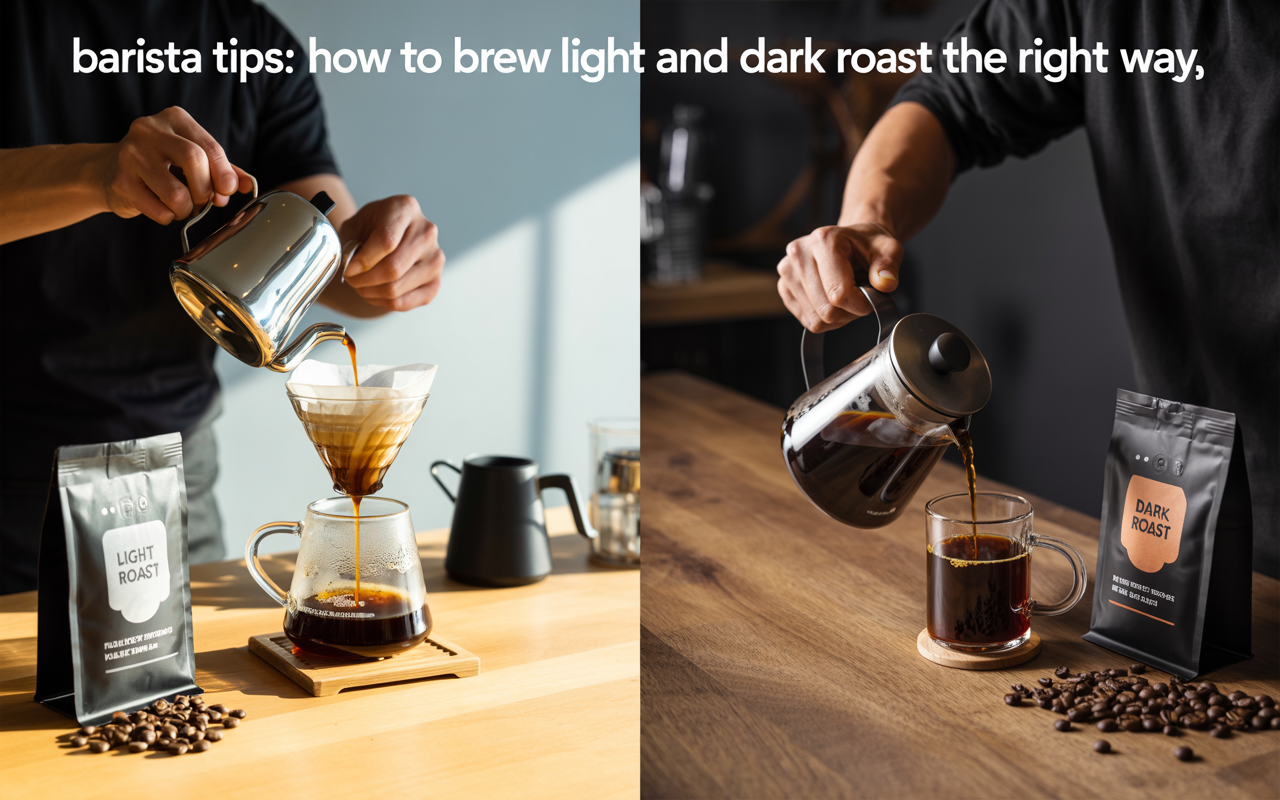
Barista Tips: How to Brew Light and Dark Roast the Right Way
Brewing methods optimized for each roast
Discovering the worth of your coffee beans depends on the brewing method you use. Most “Light Roast Coffee” brewing guides have emphasized that delicate flavour. Pour-over methods, such as with a Hario V60, ensure precision that helps to highlight the honeyed floral and fruity notes, said coffee expert James Hoffmann. The brewing methods for dark roast coffee, however, can highlight the boldness of the coffee. French press or espresso delivery fills the cup with a heavy mouthfeel and flavor, elevating the dark roast’s smoky finish. Cold brew is a surprisingly versatile brew method, and both light and dark roasts can create a smooth, low-acid brew. It is fun to play with different brewing methods, personalize the taste of your coffee, and figure out what combination is the perfect match for your specific roast level! Pick up the right one and take your coffee routine to the next level.
Light roast vs dark roast coffee is the strangest comparison ever made between the two. But is there truly a winner? It varies according to your taste. Light roasts tend to be acidic, bright, and complex, with a thinner body. Think fruity, floral, and bright. Dark roasted coffees have bold, smoky flavors, very low acid, and a thick body. Think chocolate, nuts, and power. When It’s Light vs Dark Roast Coffee, It Is Never a Competition. For coffee pros like Scott Rao, it’s all about learning to appreciate the nuances of different roast levels. Try both! Find your coffee champion. Between the lightest of light roasts and the darkest of dark roasts, there is a wonderfully diverse world of coffee flavor to discover.
Popular Posts
Colombian Coffee: Discover the Rich Flavors of Colombia’s Best
Discover the Richness of Colombia Coffee: A Complete Guide Discover the Richness of Colombia Coffee: A Complete Guide Introduction to...
Read MoreArabic Coffee: A Traditional Brew with Rich Flavors
Arabic Coffee History That Will Fascinate You Arabic Coffee History That Will Fascinate You What is Arabic coffee? Arabic coffee,...
Read MoreWhite Coffee: The Unique Brew You Need to Try Today
Experience the Smooth Taste of White Coffee: Your New Favorite Drink! Experience the Smooth Taste of White Coffee: Your New...
Read MoreEspresso Beans vs Coffee Beans: Key Differences You Should Know
Espresso Beans vs Coffee Beans – Which One Brews Best? Espresso Beans vs Coffee Beans – Which One Brews Best?...
Read MoreCubano Coffee: A Bold, Sweet Espresso Experience
Cubano Coffee: Unleash the Secrets Behind Its Rich Cubano Coffee: Unleash the Secrets Behind Its Rich Introduction Highlight the unique...
Read More
Light vs Dark Roast Coffee Caffeine: What's Stronger?
Myth-busting caffeine content differences using light vs dark roast coffee caffeine
Light roast coffee vs dark roast coffee: Which has more caffeine? Prepare to be surprised by the answer. Contrary to a long-held myth, it’s not the light roasts that are significantly more caffeinated. So a scoop of light roast beans may well yield a greater caffeine content than a scoop of dark roast, but not because there’s more caffeine in it, but because light roast beans are denser than dark roast beans. Light roast beans are denser because light roasting retains moisture during the process, according to the National Coffee Association (NCA). However, investigations such as one in the Journal of Food Science suggest that the difference in caffeine, when adjusted for weight, is small. The roasting level, not the type, of beans mostly affects the amount of caffeine. So pick your favorite roast according to taste, not whether it has more caffeine. You may be surprised at the nuance in flavors presented by each roast level.
Include lab-tested results or studies (cite trustworthy research)
Back your content with data, with the results and studies that have been tried and tested in the laboratory. Referencing reputable research data, from sources such as the Pew Research Center or those published in respected journals, gives your content a type of credibility no opinion piece possesses. “Highly correlated with SEO. “The study, conducted by Search Engine Journal, was unveiled during a webinar (embedded below). Why? Google is favouring content that is credible and evidence-based. For instance, the addition of numbers related to consumer behavior can bolster marketing statements. Similarly, citing scientific research when you talk about the benefits to health is going to provide you with a sense of authority and trust with your audience. Doing this will have benefits for SEO and will make your website a resource for users. Try focusing more on data-based content and take your presence online to the next level to find them even better.
What Is Light Roast Coffee? (Taste, Aroma, and Bean Basics)
Define coffee light roast using expert sources.
Light roast coffee is coffee beans that are roasted for a short period, and generally profile the bean’s place of origin and the fact that they are more acidic. While light roasts keep the natural flavors of the beans, making for a brighter and more complex cup, according to the National Coffee Association (NCA). So, what really is light roast coffee? Light brown in color, with a mild flavor profile, it has a floral or fruity aroma and a fuller bean than dark roasts, according to the Specialty Coffee Association (SCA). Anticipate a bright and tangy flavor profile, often described as citrusy and/or sweet. This light roasting retains caffeine, and light roasts are popular for a pick-me-up beginning. Experience the subtleties of light roast coffee and find the cup that’s just right for you.
Explain the light roast coffee bean’s appearance and characteristics.
Roasting beans to this level produces coffee whose color is nearly the same as the original green beans, with very little light roast flavor evident. According to the Specialty Coffee Association (SCA), these beans have a dry surface, without the oils that darker roasts have. They still weigh more than darker roasts, because the roasting is so much shorter and there’s less moisture loss. This held size and density, according to coffee expert Scott Rao, creates the vibrant acidity and compositional complexity present in light roast. The dark outer coat and the oil slick and fissures typically indicative of a darker roast are notably absent. This dry coffee allows the beans to exhibit all the nuanced floral and citrusy tones the light roast emphasizes. The look of the bean affects the final cup as well; it has a complex flavor unlike any other roast level.

What Is Dark Roast Coffee? (Flavor, Roast Level, and Texture)
Characteristics of dark roasts: bold, smoky, lower acidity
Dark roast coffee has a full, bold flavor profile that can only be celebrated. What is dark roast coffee? It’s a product of long roasting that yields beans with a deep, dark color and an oily surface, the Specialty Coffee Association (SCA) reports. This helps to decrease acidity, giving the coffee a smoother, less zesty flavour than light roasts. “Look for notes of chocolate, nuts, or even burnt caramel,” according to coffee expert Scott Rao. The consistency is usually a bit thinner as the cellular structure is disrupted during roasting. Dark roasts have a strong, bittersweet flavor, which means you might like them if you’re not a fan of acidic coffee and you crave something strong. Dive deep into dark roasted treasures and find your new fave brew.
Common uses (espresso, traditional brews)
As a fast wake-up boost or an elegant dessert, coffee can do it all in innumerable cultures. Espresso, a very strong brew, is probably the most popular form, though the crema is sometimes mistaken for foam. “Uses for espresso” include traditional Italian cappuccinos and lattes as well as contemporary compositions. Classic coffee makers, such as drip and French press, provide an easier, yet just as enjoyable experience, as noted by the National Coffee Association (NCA). These methods bring out the nuances of the coffee’s flavor and offer a comforting ritual for those who practise them. Coffee is a global language – a part of people’s daily ritual, whether they need a pick-me-up, catch up with friends, or take a moment for themselves. Whether it is a black coffee poured simply into a cup or a complex espresso-based drink, coffee is certainly well-travelled.
Light vs Dark Roast Coffee Experience
Share a perfect experience or a blind taste test.
I remember this blurb recently, “light vs dark roast coffee experience,” which came to light at a blind tasting and completely rewrote my coffee experience. We tasted a variety of roasts, all identities concealed, and simply followed our sensory responses. Light roasts were a revelation; they were complex and actually bright, not just bright for a coffee. The flavors of these coffees varied from bright citrus to light florals, as coffee expert Scott Rao described them. The dark roasts brought their famous smoky boldness, but ironically were burying some original character below thicker roast notes. The textural contrasts were dramatic: light roasts had a fatter body and dark roasts a leaner one. Ironically, various self-anointed dark roast lovers boasted of their love of lighter flavors. It reinforced the importance of open-mindedness and the broad spectrum of the sensory world in coffee. This cupping changed the way we thought about roasting.
Discuss regional preferences based on user reviews or data.
Regional coffee trends are an important consideration for localized marketing and product development. “Regional preferences for coffee” provides interesting insights. There are clear trends, as inferred from the data provided by sources such as the National Coffee Association (NCA). For instance, in the Pacific Northwest, there’s a preference for a light roast that reflects unique flavor notes. The Northeast, meanwhile, tends to favor darker, stronger cups. User ratings on sites such as Yelp and Google My Business can provide an even finer-grained look at these geographic variations. The personality of the South is one that favors flavored, sweet coffees. By studying these data, companies can customize their packages and promote and market campaigns. Local knowledge is the key to unlocking potential and finding success in the crowded coffee market. Dive into local data and find hidden potential.
Which Roast Is Healthier? (From a Dietitian's Perspective)
Antioxidant levels in different roast types
The antioxidant concentrations in coffee roasts are dependent on the roasting level. The “healthful effects of coffee” may be related interestingly to its protective antioxidants. “Coffee roasts: Antioxidants are present in all roasted coffee, but several studies indicate light and medium roasts may offer slightly more antioxidants. A report in the Journal of Medicinal Food found greater amounts of chlorogenic acid, a potent antioxidant, in lighter roasts. However, darker roasts also hold other compounds that are good for us, such as melanoidins, which are created during the roasting. Generally, the health benefits of coffee are wide-ranging, roasting notwithstanding, dietitians point out, citing the Academy of Nutrition and Dietetics. Learning extension: Moderate coffee intake can lead to a lower risk of some diseases. At the end of the day, the “healthiest” roast will be whatever one fits your own preferences and goals. Indulge in your favorite form of roasting while feeling good about the health benefits of coffee.
Stomach sensitivity or acidity considerations
“Coffee acidity and sensitive stomach” are important factors for many coffee enthusiasts. When you research “light vs dark roast coffee acidity,” one distinction becomes clear. Some people with sensitive stomachs find that the higher acidity level in light roasts can lead to discomfort. Dark roasts, roasted longer, are also less acidic and easier to digest. This distinction, according to gastroenterologist Dr. Kenneth Brown, is important for those susceptible to heartburn or acid reflux. Interestingly, cold-brew (at any roast level) typically has lower overall acidity than hot-brewed coffee, an additional alternative for sensitivities. In the end, it comes down to what you can tolerate. It can take a few experiments with roasts and types of brew to discover what’s best for a tolerable cup of coffee.

Barista Tips: How to Brew Light and Dark Roast the Right Way
Brewing methods optimized for each roast
Discovering the worth of your coffee beans depends on the brewing method you use. Most “Light Roast Coffee” brewing guides have emphasized that delicate flavour. Pour-over methods, such as with a Hario V60, ensure precision that helps to highlight the honeyed floral and fruity notes, said coffee expert James Hoffmann. The brewing methods for dark roast coffee, however, can highlight the boldness of the coffee. French press or espresso delivery fills the cup with a heavy mouthfeel and flavor, elevating the dark roast’s smoky finish. Cold brew is a surprisingly versatile brew method, and both light and dark roasts can create a smooth, low-acid brew. It is fun to play with different brewing methods, personalize the taste of your coffee, and figure out what combination is the perfect match for your specific roast level! Pick up the right one and take your coffee routine to the next level.
Light roast vs dark roast coffee is the strangest comparison ever made between the two. But is there truly a winner? It varies according to your taste. Light roasts tend to be acidic, bright, and complex, with a thinner body. Think fruity, floral, and bright. Dark roasted coffees have bold, smoky flavors, very low acid, and a thick body. Think chocolate, nuts, and power. When It’s Light vs Dark Roast Coffee, It Is Never a Competition. For coffee pros like Scott Rao, it’s all about learning to appreciate the nuances of different roast levels. Try both! Find your coffee champion. Between the lightest of light roasts and the darkest of dark roasts, there is a wonderfully diverse world of coffee flavor to discover.
Popular Posts
Coffee Bag: Convenient, Fresh Coffee On-the-Go
Best Coffee Bags in 2025: A Guide to Quality and Freshness Best Coffee Bags in 2025: A Guide to Quality...
Read MoreThe Ultimate Guide to Perfect Espresso Grounds
The Ultimate Guide to Perfect Espresso Grounds The Ultimate Guide to Perfect Espresso Grounds Introduction: Mastering Espresso Grounds for Great...
Read MoreCoffee Urns: Perfect for Brewing Large Quantities of Coffee
Coffee Urn: Elevate Your Gathering with Perfectly Brewed Coffee! Coffee Urn: Elevate Your Gathering with Perfectly Brewed Coffee! I. Introduction...
Read MoreHazelnut Coffee: A Perfect Blend of Nutty and Sweet Flavors
Hazelnut Coffee: Everything You Need to Know for a Perfect Brew Hazelnut Coffee: Everything You Need to Know for a...
Read MoreEspresso Beans vs Coffee Beans: Key Differences You Should Know
Espresso Beans vs Coffee Beans – Which One Brews Best? Espresso Beans vs Coffee Beans – Which One Brews Best?...
Read MoreEthiopia Coffee: Rich Flavors of Africa’s Best Brew
The Ultimate Guide to Brewing, Sourcing, and Tasting Ethiopia Coffee The Ultimate Guide to Brewing, Sourcing, and Tasting Ethiopia Coffee...
Read More

